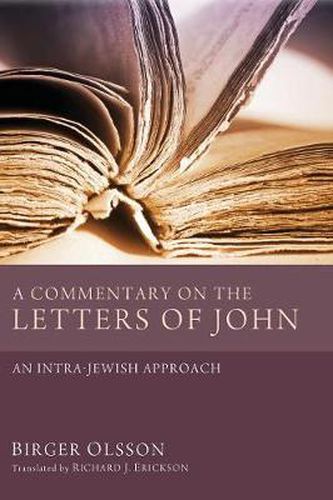Readings Newsletter
Become a Readings Member to make your shopping experience even easier.
Sign in or sign up for free!
You’re not far away from qualifying for FREE standard shipping within Australia
You’ve qualified for FREE standard shipping within Australia
The cart is loading…






This title is printed to order. This book may have been self-published. If so, we cannot guarantee the quality of the content. In the main most books will have gone through the editing process however some may not. We therefore suggest that you be aware of this before ordering this book. If in doubt check either the author or publisher’s details as we are unable to accept any returns unless they are faulty. Please contact us if you have any questions.
The long history of interpretation of the three Johannine letters has been largely characterized, at least since Irenaeus in the late second century, by the assumption that the Elder was addressing the Gnostic heresy. In recent years, particularly with the work of Raymond Brown, attention has been focused on the internal schism within the Johannine (or Beloved Disciple’s) community, thus taking the first epistle as a corrective to secessionists’ misguided attempts to read the Gospel of John in an advanced, spiritualizing manner. Birger Olsson returns to a less common perspective, one that views the crisis facing the Elder as a wholly intra-Jewish problem. The Johannine community comprised Jewish believers who regarded Jesus as the long-promised Messiah of Israel, but at some point in the community’s life, under the leadership of one Diotrephes, some members of the community chose to reject this conviction and to entice other members to do likewise. Olsson anchors his thoroughgoing interpretation of the three letters in this conflict among Jewish Christians over the nature of the Messiah and the renewal of Israel’s ancient covenant. Among other things, this implies that the letters were written in reverse order of their numbering.
$9.00 standard shipping within Australia
FREE standard shipping within Australia for orders over $100.00
Express & International shipping calculated at checkout
This title is printed to order. This book may have been self-published. If so, we cannot guarantee the quality of the content. In the main most books will have gone through the editing process however some may not. We therefore suggest that you be aware of this before ordering this book. If in doubt check either the author or publisher’s details as we are unable to accept any returns unless they are faulty. Please contact us if you have any questions.
The long history of interpretation of the three Johannine letters has been largely characterized, at least since Irenaeus in the late second century, by the assumption that the Elder was addressing the Gnostic heresy. In recent years, particularly with the work of Raymond Brown, attention has been focused on the internal schism within the Johannine (or Beloved Disciple’s) community, thus taking the first epistle as a corrective to secessionists’ misguided attempts to read the Gospel of John in an advanced, spiritualizing manner. Birger Olsson returns to a less common perspective, one that views the crisis facing the Elder as a wholly intra-Jewish problem. The Johannine community comprised Jewish believers who regarded Jesus as the long-promised Messiah of Israel, but at some point in the community’s life, under the leadership of one Diotrephes, some members of the community chose to reject this conviction and to entice other members to do likewise. Olsson anchors his thoroughgoing interpretation of the three letters in this conflict among Jewish Christians over the nature of the Messiah and the renewal of Israel’s ancient covenant. Among other things, this implies that the letters were written in reverse order of their numbering.